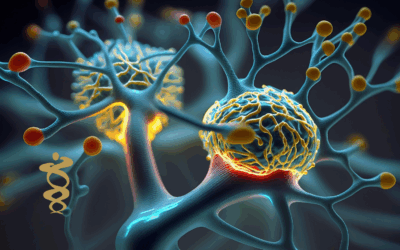A good night’s sleep is the foundation of physical and mental well-being. But achieving restful sleep goes beyond simply lying down and closing your eyes—it requires setting up the right habits, routines, and environment. Whether you’re feeling restless or want to take your sleep quality to the next level, developing a healthier lifestyle can help you optimize your sleep habits.
Understanding Common Sleep Disorders
Sleep is essential for our physical and mental well-being, yet millions of people globally struggle to get quality rest due to sleep disorders. These disorders disrupt normal sleep patterns, leading to fatigue, irritability, and in some cases, serious health issues. Let’s take a closer look at some of the most common types of sleep disorders, their symptoms, and how they affect your daily life.
Sleep apnea
Sleep apnea is a serious condition where your breathing repeatedly stops and starts during sleep. This occurs because the airway becomes either partially or fully blocked, disrupting oxygen flow. Symptoms include loud snoring and gasping for air and can cause daytime drowsiness and fatigue. Untreated, sleep apnea can increase the risk of heart disease, stroke, and high blood pressure. Fortunately, most of the time it is manageable with treatments like CPAP machines and lifestyle changes.
Insomnia
Insomnia is one of the most well-known and widespread of sleep disorders, characterized by the inability to fall asleep or stay asleep. Experiencing occasional sleepless nights is normal, but chronic insomnia requires attention. Symptoms include difficulty falling asleep and waking frequently and can result in irritability, mood swings, and reduced productivity. Insomnia can often be managed through cognitive behavioral therapy and establishing healthy sleep routines like limiting screen time before bed, among other approaches.
Periodic Limb Movement Disorder (PLMD)
Periodic Limb Movement Disorder (PLMD) is a condition that causes involuntary repetitive movements of the legs or arms during sleep. These movements can disrupt sleep and affect overall rest quality for both the individual and their bed partner. PLMD is sometimes associated with restless leg syndrome (RLS) but is considered a separate condition. Treatments may include improving iron levels, or addressing underlying issues like stress or poor sleep hygiene.
Before Bed: Setting Yourself Up for Success
Your pre-sleep routine plays a critical role in how well you rest. Here are actionable steps to prepare your mind and body for deeper, uninterrupted sleep:
1. Prioritize Daily Exercise
Engaging in at least 30 minutes of daily exercise can significantly improve sleep quality. However, avoid strenuous workouts within four hours of bedtime, as this could leave you too energized to fall asleep.
2. Cut Out Smoking, Alcohol, and Caffeine
Smoking: Nicotine is a stimulant, so avoid smoking, particularly in the two hours before bed, as it can disrupt your ability to fall asleep.
Alcohol: While a nightcap might make you drowsy, alcohol can interfere with deeper sleep stages. Avoid drinking alcohol 4-5 hours before bedtime to prevent nighttime awakenings and unpleasant withdrawal effects, like nightmares or sweats.
Caffeine: Found in coffee, tea, soda, chocolate, and even some medications, caffeine can stay in your system for up to 6-8 hours. Reduce your intake gradually to prevent withdrawal symptoms such as headaches. This could help you fall asleep more easily.
3. Avoid Large Evening Meals
Large meals can cause discomfort and make it harder to fall asleep. Try to organize your meals so that you are eating more of your food from mid-morning (if you’re not fasting) until late afternoon. In the event, you can have a small but varied meal. Snacking just before bed isn’t advisable.
4. Manage Anxiety with Relaxation Techniques
Pre-sleep anxiety can significantly impact your quality of rest. Incorporate relaxation practices such as:
– Deep breathing
– Aromatherapy (for instance lavender or chamomile essential oils)
– Meditation
– Progressive muscle relaxation
– A pleasant and calming bath
What other things do you find relaxing?
5. Take Power Naps Wisely and Notice How Late You Sleep
Limit naps to 15-20 minutes, and avoid napping in the late afternoon or evening, as this can interfere with nighttime sleep, especially if too close to your ideal bedtime. In this same vein, avoid sleeping in late when you have stayed up later. Try to get up regardless to help your body be more likely to feel tired in the evening (especially when coupled with some of these other strategies). This can prevent a cycle of staying up very late and sleeping in, unless this is intentional due to shift work.
6. Wind Down Mental Activity
Stop work-related and other mentally-charged tasks an hour before bed to allow your mind to slow down. Avoid bright screens and stimulating activities. Allow your bedroom to be a sanctuary – associated with sleep as much as possible. This means avoiding doing strenuous or stressful things in your room and especially from bed – like working and eating.
Paleo-Med: A Lifestyle Conducive to Healthy Sleep Habits
A Paleo-Med lifestyle recognizes the importance of sleep, healthy eating, and physical activity. It encourages adopting healthy sleep hygiene, such as establishing a regular sleep schedule, avoiding caffeine and alcohol before bedtime, and creating a comfortable sleep environment.
A recent study suggests that staying awake long past sunset may be part of human nature and not just due to modern technology or societal demands. Researchers from UCLA observed three hunter-gatherer societies—the Hadza, San, and Tsimane—whose sleep patterns reveal they rest less than modern humans, averaging 5.7 to 7.1 hours per night, even without artificial light. These groups typically sleep hours after sunset and rise before sunrise, with minimal napping observed.
Seasonal changes in temperature, rather than light, influence their sleep cycles. Unlike Western societies, these groups rarely experience sleep disorders, possibly due to their active lifestyles and lower obesity rates. Experts suggest that cultural expectations and lifestyle differences, such as work schedules and centralized heating, play a significant role in disrupting Western sleep habits. To improve sleep health, a cultural shift prioritizing rest may be necessary.
Ready to lead a Paleo-Med Lifestyle? Check out our Paleo-Med Lifestyle Guide.
Conclusion
Sleep disorders do more than cause sleepless nights—they can have a significant impact on physical and mental health. From heart problems in sleep apnea patients to reduced productivity caused by insomnia, these conditions affect every aspect of life.
A lack of proper sleep can also play a role in a variety of conditions like hormone imbalances, difficulty with weight loss and more.
The first step toward better sleep is identifying and addressing the symptoms. Whether through medical interventions, therapy, or lifestyle changes, managing sleep disorders can transform your overall well-being.
If you suspect you might have a sleep disorder, consulting a healthcare professional is crucial. Quality sleep isn’t a luxury—it’s a necessity!





